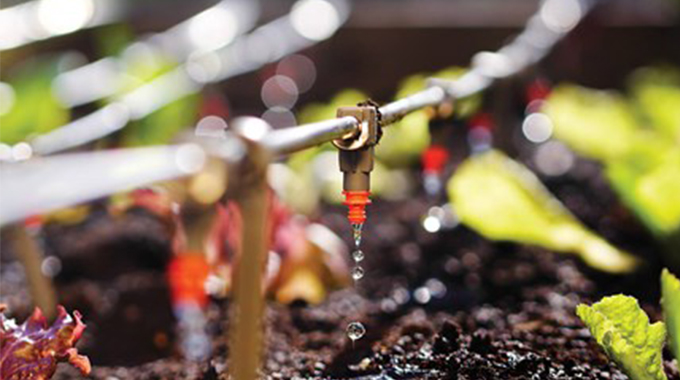Beitbridge farmers embrace drip irrigation

Thupeyo Muleya, Beitbridge Bureau
FARMERS in Beitbridge have embraced drip irrigation as a model to boost agriculture production and adapting to changing climatic conditions.
Drip irrigation is a type of micro-irrigation system credited for saving water and nutrients by allowing water to drip slowly to the roots of plants, either from above the soil surface or buried below the surface.
Under this type of irrigation water is placed directly into the root zone of plant to minimise evaporation.
Previously most farmers used canals, sprinklers, or flood irrigation to water crops.
These models are blamed for depleting water sources in light of climate change.
Royal Cooper Estates has adopted drip irrigation with manager, , saying their horticulture project was doing well under the model.
The estate plans to draw water from Zhovhe Dam and has already started trenching to lay drip pipes.
“You will note that we have been experiencing droughts and receiving low rainfall. In addition, Beitbridge is a dry area where crops only do well under irrigation farming.
“However, to maximise the little water we have, we adopted drip irrigation as an ideal method, which uses little water with high productivity,” said Mr Karonga.
“As you can see, we have very fertile soils and we only need adequate irrigation water to increase production. Drip irrigation is good for sustaining crops and saves water compared to flood or using sprinklers or other types of irrigation.”
He said using drip irrigation had also helped them control weeds since they started the project four years ago.
Mr Karonga said they had built an aqua dam, which carries 5 755 300 litres of water drawn from Mazunga River and some six boreholes powered by generators.
He said they had also started trenching for 15km as they seek to grow the project with irrigation water from the nearby Zhovhe Dam.
They have also acquired transformers awaiting installation by ZETDC to power irrigation pumps.
“At out peak we employ 45 people and the farmland is normally put under tomatoes, butter nuts, green chillies, green paper, vegetables, which we sell to local supermarkets and Gwanda, Bulawayo and Harare,” he said.
“We produce at least 120 to 130 tonnes of tomatoes per hectare. Daily we get 200 crates on the local market. Our dream is to grow into a huge project to supply the southern region.”
In view of the effects of climate change, Mr Karonga said it was important for farmers in the district to embrace drip irrigation and maximise production with less labour.
Setting up a drip irrigation system was a seamless process involving the right expertise and source of water. The estate is also into fishery projects, poultry and livestock production.
Climate change has altered seasons resulting in low rainfall totals especially in the southern region, which has crippled agriculture output. Human activity such as greenhouse gases emission are some of the factors behind climate change.









Comments